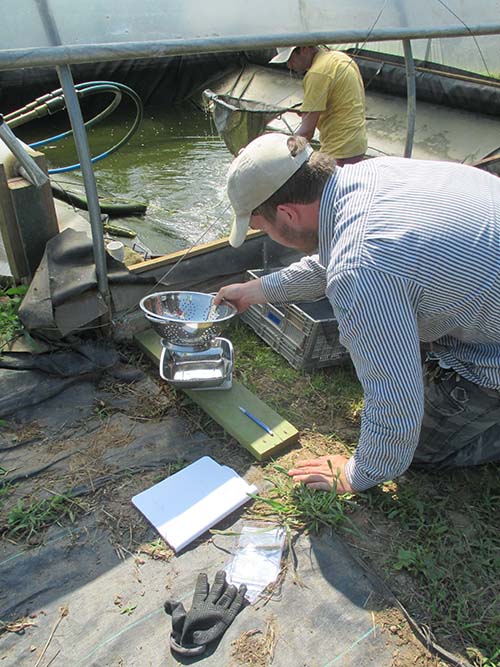Aquaponics Fish Diseases and Illnesses
Chapter 11
Most of the fish suitable for commercial production are relatively hardy and disease resistant. However, illnesses still can reach the aquaponics system and cause a serious or total loss of fish. Even less serious illnesses slow down growth enough to eat into the profits you earn off the fish themselves. In addition to learning how to identify and treat fish diseases, you should focus on preventing them in the first place to reduce the costs of medication and monitoring.
Preventing Disease
Techniques for encouraging good fish health in aquaponics include:
- Maintaining proper stocking and feeding rates; to reduce excessive ammonia levels that weaken the immune systems of the fish.
- Sanitizing rearing tanks between batches of fish; especially after any suspicion of disease in the previous batch.
- Sanitizing the entire system after the outbreak of a serious disease that leads to a partial or total die-off.
- Maintaining strong circulation throughout the entire system; to prevent water quality fluctuations.
- Covering fish rearing tanks with at least a canopy of shade cloth or tarp; to prevent birds from releasing droppings into the water that can spread disease.
- Sterilizing water from a natural source like a pond or river; since the wild fish populations may be carrying diseases.
- Feeding a high-quality feed at appropriate intervals; for healthy immune systems and rapid growth that makes it harder for a disease to settle into the population.
Slow Growth
Even with optimal water quality and feeding routines, some fish simply won’t grow quite as quickly as the rest of their cohort. Slow-growing fish won’t cause disease problems, but they can trigger cannibalistic behavior that leads to damage to larger fish in carnivorous and aggressive omnivorous species. Grading the fish every few months and removing the smallest 2-5% of the population is recommended if you’re using batch production. This is usually accomplished by using a grader bar to capture the largest fish and move them into a different tank until only the smallest are left behind. Grader bars are simple tools made of metal bars spaced perfectly to only grab hold of fish of a certain size, letting the smaller ones slip through and remain in the tank. Weighing the fish is the most accurate way to determine their true size, as two fish of the same length may have a distinct difference in weight.
Signs of Common Fish Illnesses
Ichthyophtirius: This common fish parasite creates white fuzzy patches on the scales, fins and gills of the fish. Early symptoms can include dull or tattered looking scales, clamped fins and gills and sluggish behavior.
Vibriosis: This disease caused by the Vibrio anguillarum bacteria can infect over 50 species of both fresh and saltwater fish. The bacteria is widely spread, but fish don’t tend to develop infections until they’re stressed, injured or both. Rapid and unexplained die-off is the main symptom, along with refusal to eat, darkening of the skin and red spots around the ventral fins due to internal bleeding.
Dactylogyrosis: This disease involves infestation of the fish by Dactylogyrosis nematodes. Transferred directly from fish to fish or by infected water introduction, this infestation can spread rapidly before you notice a problem. Symptoms include pale or patterned gills, gasping for air, crowding at the inlet for fresh water and weight loss that leaves the head of the fish visibly too large for their bodies.
Treatment Tips
There are plenty of antibiotics, anti-parasite treatments and other medications available for treating these diseases. All fish medications feature a withdrawal period in which the fish aren’t safe to harvest for food purposes. Some medications make the fish permanently unsafe to eat, making these products unsuitable to use in aquaponics systems. Check all medications and treatments before using them on a food-producing system. Vaccines are available for preemptively treated fish if you live in an area with active infections or high risk levels and they’re likely worth the cost since vaccination can prevent complete losses of thousands of dollars’ worth of fish.





